HULK Metal will continuously update the dynamics of the metal products industry, to support your decision-making.

Hulk Metal News
Share what's new
What kind of inspections should be done before choosing a wire gripper?

A wire gripper is a key tool in wire stringing operations. It is usually used in conjunction with a wire tensioner. Its main function is to clamp the sagging line and then tighten it with the wire tensioner. As an auxiliary tool for the wire tensioner, the wire gripper plays an irreplaceable role in wire stringing operations. The following are the precautions when using the wire gripper.
Inspections to be done before selecting a wire gripper
The quality of the wire gripper directly affects the smooth progress of the wire stringing operation. Therefore, when choosing a wire gripper, in order to avoid buying inferior products, you need to pay attention to the following issues.
Surface inspection
First, when choosing a wire gripper, its surface should be carefully inspected. This includes:
- Cracks: Check if there are any cracks on the surface of the wire gripper. Cracks may cause the wire gripper to break during use, causing safety hazards.
- Bending: Make sure the wire gripper does not have any bending deformation. A bent wire gripper may not be able to clamp the line correctly during use.
- Shaft flexibility: Check whether the shaft is flexible. If the shaft is not flexible, the wire gripper may not operate properly during use, affecting the efficiency and safety of the wire stringing operation.
These surface inspections are basic and the most intuitive quality judgment methods. Once the above problems are found, they should be regarded as unqualified products and prohibited from purchase to avoid greater safety hazards in wire stringing operations.
Tensile strength test
Tensile strength is one of the key indicators of the performance of the wire gripper. When selecting a wire gripper, it is necessary to ensure that its tensile strength can meet the needs of pulling the ground wire. Specifically:
- Tensile strength requirements: The tensile strength of the wire gripper should meet the requirements of wire stringing operations. Generally speaking, the safety factor should be greater than three. This means that the maximum tensile force that the wire gripper can withstand should be at least three times the working tensile force to ensure that no breakage or failure occurs during use.
Ensuring that the wire gripper has sufficient tensile strength is an important prerequisite for ensuring the safety and smooth progress of wire stringing operations.
Grip test
The gripping ability of the wire gripper directly affects its use effect and safety. When selecting a wire gripper, it is necessary to test its grip on the ground wire or wire rope. Specific test contents include:
- Maximum use tension: Under the maximum use tension of the wire, the wire gripper should be able to firmly clamp the wire without sliding or falling out. This needs to be tested in the actual use environment to ensure that the wire gripper can meet the working requirements.
- No damage to the wire rope: When the wire gripper clamps the wire rope, it should not cause any damage to the wire rope. This requires that the clamping part of the wire gripper is reasonably designed, with a smooth surface and no sharp edges.
Through the grip test, the actual use performance of the wire gripper can be fully evaluated to ensure its reliability in high-intensity wire stringing operations.
Material and process inspection
In addition to the above basic inspections, materials, and processes are also key factors in determining the quality of the wire gripper. When choosing a wire gripper, you should pay attention to the following points:
- Material quality: The wire gripper is usually made of high-strength alloy steel to ensure that it has sufficient strength and durability. When choosing, you should understand the specific composition and quality standards of the materials used in the wire gripper to ensure that it meets relevant industry specifications.
- Heat treatment process: During the manufacturing process of the wire gripper, the heat treatment process has an important impact on its performance. A good heat treatment process can significantly improve the strength and hardness of the material and extend the service life of the wire gripper. When choosing, you should understand the manufacturer's heat treatment process and quality control measures.
- Surface treatment: The surface treatment of the wire gripper should not be ignored. High-quality surface treatment can improve the corrosion resistance of the wire gripper and avoid rust in a humid environment, which will affect its service life and safety.
Manufacturer's reputation and after-sales service
When choosing a wire gripper, you should also consider the manufacturer's reputation and after-sales service. Specifically:
- Manufacturer's reputation: Choosing a manufacturer with a good reputation and rich experience can ensure the quality and reliability of the wire gripper. Understanding the manufacturer's history, customer reviews and market feedback can help make a more informed choice.
- After-sales service: Perfect after-sales service is an important part of quality assurance. Choosing a manufacturer that provides high-quality after-sales service can obtain timely technical support and maintenance services during the use of the product to ensure the safety and reliability of the wire gripper in long-term use.
Standardized operation and maintenance
After purchasing a cable clamp that meets the quality requirements, it is also necessary to standardize the operation and maintenance in actual use. Specifically include:
- Standardized operation: Strictly follow the instruction manual to ensure that the cable clamp works under the correct conditions of use. Avoid overload or improper operation to prevent damage to the cable clamp.
- Regular inspection: During use, regularly inspect and maintain the cable clamp. Timely discover and deal with possible problems to ensure that the cable clamp is always in good working condition.
- Storage environment: When the cable clamp is not in use, it should be stored in a dry and ventilated environment to avoid moisture and rust. A reasonable storage environment can extend the service life of the cable clamp.
In summary, the selection of the cable clamp is an important part of the wiring operation. Through surface inspection, tensile strength testing, grip testing, material and process inspection, manufacturer reputation and after-sales service considerations, as well as standardized operation and maintenance, it can ensure that high-quality cable clamps are selected, thereby ensuring the safety and smooth progress of the wiring operation.
Specific applications of wire grippers in wire stringing operations
As a key tool in wire stringing operations, wire grippers are used in a variety of wire stringing tasks. In practical applications, choosing a suitable wire gripper according to different wire stringing requirements can significantly improve work efficiency and safety. The following are several typical applications of wire grippers in wire stringing operations:
High-voltage wire erection
In the erection of high-voltage wires, wire grippers are usually used to tighten and adjust the tension of wires. The erection of high-voltage wires requires extremely high safety and stability. The quality and performance of wire grippers are directly related to the firmness and erection effect of wires. Specific applications include:
- Wire tension adjustment: Tighten the wires with wire grippers, and then use the tensioner to adjust the tension to ensure that the wires maintain appropriate tension during the erection process and prevent the wires from loosening or being overly tight.
- Wire fixation: After the wires are erected, use wire grippers to fix the wires on the pole towers to ensure that the wires do not move during use.
Communication line installation
In the installation of communication lines, the cable clamp is mainly used to fix and adjust the tension of optical fiber or communication cable. The installation of communication lines requires the stability of the line and the reliability of signal transmission. The tightening effect of the cable clamp directly affects the communication quality. Specific applications include:
- Fiber fixing: Use the cable clamp to fix the optical fiber to ensure that the optical fiber is not affected by external forces during the installation process and maintains a good signal transmission effect.
- Cable tension adjustment: Through the cooperation of the cable clamp and the tensioner, the tension of the communication cable is adjusted to ensure that the cable maintains appropriate tension during the installation process to prevent signal transmission from being interfered with.
Overhead ground wire installation
The installation of overhead ground wire also requires the use of a cable clamp for fixing and tension adjustment. Overhead ground wires are usually used for the protection and grounding of power lines, and their installation requires high safety and stability. Specific applications include:
- Ground wire tightening: Use the cable clamp to tighten the overhead ground wire to ensure that the ground wire is firm and stable during the installation process.
- Ground wire tension adjustment: Through the cooperation of the wire gripper and the wire tightener, the tension of the overhead ground wire is adjusted to ensure that the ground wire maintains appropriate tension during use and prevents the ground wire from being loose or overly tight.
Railway electrification line erection
The erection of railway electrification lines also requires the use of wire grippers for fixing and adjustment. The erection of railway electrification lines requires the stability and safety of the lines, and the tightening effect of the wire gripper is directly related to the safe operation of railway electrification lines. Specific applications include:
- Electrification line tightening: Use wire grippers to tighten railway electrification lines to ensure that the lines are firm and stable during the erection process.
- Line tension adjustment: Through the cooperation of wire grippers and wire tighteners, the tension of railway electrification lines is adjusted to ensure that the lines maintain appropriate tension during use and prevent the lines from being loose or overly tight.
Through the above typical applications, we can see the important role of wire grippers in wire erection operations. Choosing a suitable wire gripper can not only improve the efficiency of wire erection operations, but also ensure operations.
Article Navigation
Article Navigation
Industries
Forging Factory
-
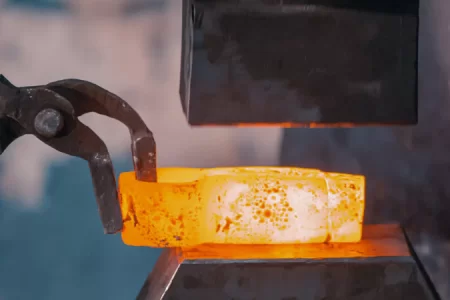 012024.07Difference between hot forging and cold forging
012024.07Difference between hot forging and cold forging -
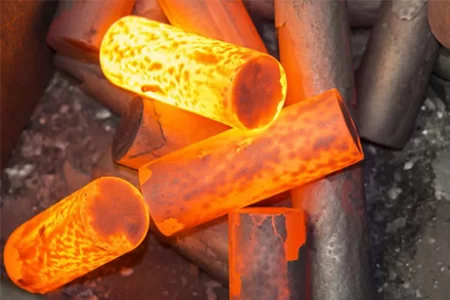 272024.06What are the advantages and disadvantages of the hot forging process?
272024.06What are the advantages and disadvantages of the hot forging process? -
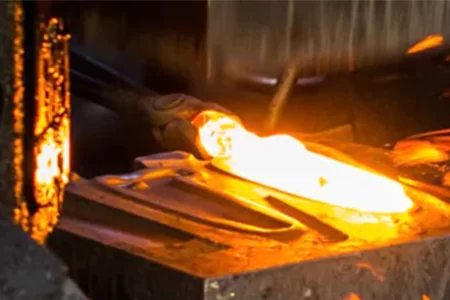 182024.01Forging: What Is It? What Are The Different Types of Hot Forging?
182024.01Forging: What Is It? What Are The Different Types of Hot Forging? -
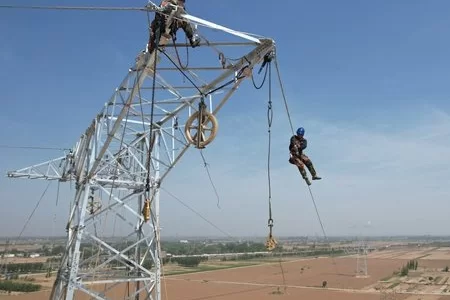 252024.07How to Choose the Perfect Cable Grips for Your Needs?
252024.07How to Choose the Perfect Cable Grips for Your Needs? -
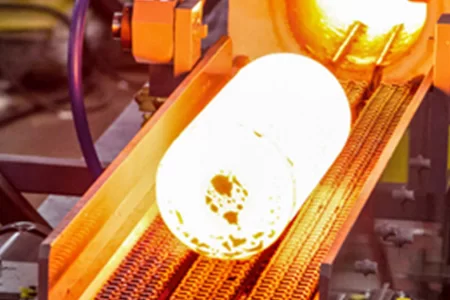 032024.07What are the processes of hot forging?
032024.07What are the processes of hot forging?


